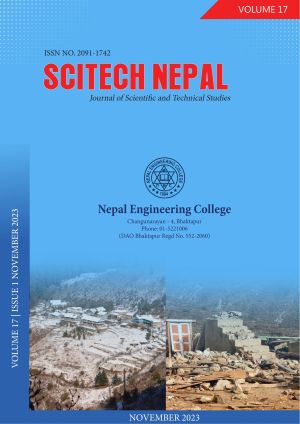How Effective Is Inter-Basin Transfer to Manage Temporal Variation Of “Too Much” And “Too Little” Water Conditions for Irrigation in a Himalayan Basin?
DOI:
https://doi.org/10.3126/scitech.v17i1.60466Keywords:
Irrigation, water management, inter-basin transfer, Nepal Himalayas, Sunkoshi-Marin Diversion ProjectAbstract
Better irrigation facilities leading to “more crop per drop” are today’s needs. This study examines how the overall water balance of Sunkoshi, Marin, and Bagmati Basins will be altered by implementing the Sunkoshi-Marin Diversion Project (SMDP) to fulfill the unmet demands of the Bagmati Irrigation Project (BIP) in the Bagmati Basin via the Marin Basin in Nepal. The specific objectives are to: i) quantify “too much” and “too little” water peculiar to the study basin based on historical data; ii) evaluate water availability, irrigation water requirement, and deficits with and without SMDP; and iii) provide evidence-based recommendations on the effectiveness of the SMDP considering hydropower generation, irrigation and low- and high-flow conditions. Thirty years of historical daily flow data (two gauging stations) and precipitation data (15 stations) were obtained from the Department of Hydrology and Meteorology. Other spatial input data were acquired from relevant authorized sources. Water availability has been estimated using flow at the diversion sites while the irrigation requirements have been calculated based on secondary information. Results show that additional water is not at all required for Marin and Bagmati Basins in the monsoon season. Rather, the diverted water increases the flood hazard. Moreover, the contribution of hydropower from SMDP to the national energy demand is insignificant in the monsoon. However, the SMDP was found to play an important role in meeting the irrigation deficits during the dry season. Its contribution to hydropower production in the lean period is also commendable. However, the proposed irrigation requirement of the BIP cannot be met even after the implementation of the SMDP. More importantly, there is a high probability of the intended diversion flow not being available in the Sunkoshi River (donor) which could have severe consequences downstream. Therefore, additional options for conjunctive use need to be explored.




